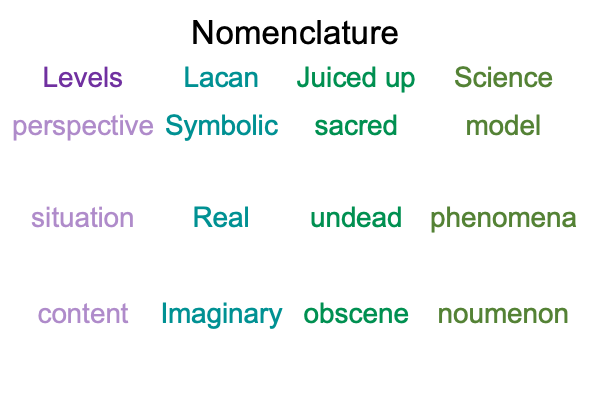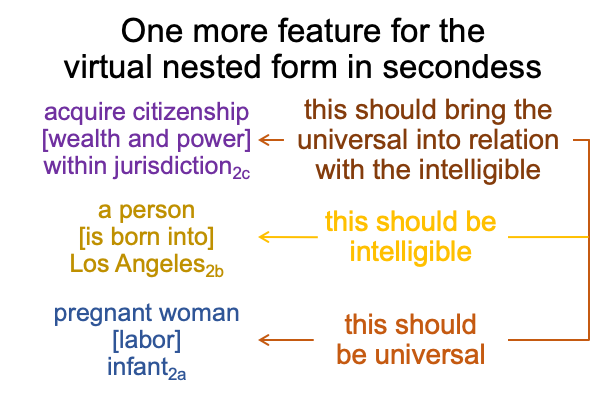0254 Okay, if Christian atheism is anything like therapeutic psychoanalysis, then spoken words from the actuality2a, what I think [contiguity] what I say2a, are associated to slots in a three-level interscope. The analysand and the analyst look at the same foregrounded object, but with a shifting framework in the background. In one session, the background is Imaginary, Real and Symbolic. At another session, it swerves to noumenon, phenomena and model. At other moments, it gets juiced up to obscene, undead and sacred.
All the while, what I think [contiguity] what I say2a is virtually situated by the analytic dyad2b, which Freud invents in practice and which Lacan attempts to rescue in terms of theory.
0255 Here are labels for each of the three levels, as they appear in this examination.

0256 At this juncture, I would like to note that the very first column also provides labels. These labels are rather bland. However, they coincide with the scholastic interscope for how people think, appearing in Looking at John Deely’s Book (2010) “Semiotic Animal” (located in Razie Mah’s blog for the month of October 2023).
The scholastics impose expectations onto each level.
These expectations include universality, for the content level, intelligibility, for the situation level and judgment, for the perspective level.
0257 Here is a picture of those expectations for the actualities in the interscope produced in this examination of Zizek’s text.

